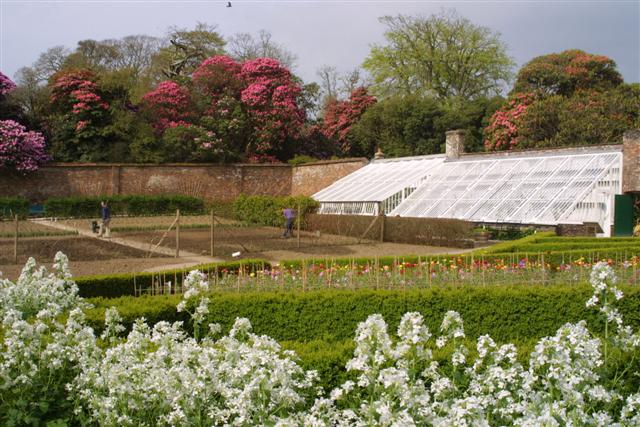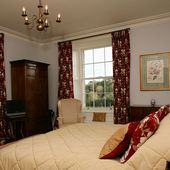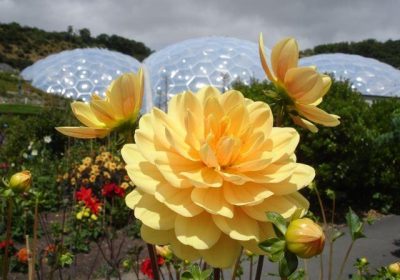Lost Gardens of Heligan – St Austell
Description
The Heligan Bakery produces fresh bread, rolls and cakes onsite daily and meals incorporate Heligan and locally reared meat as well as Heligan grown and locally sourced produce allowing the best of the seasons flavours to be experienced all year round.
• Free parking for cars and coaches
• Disabled access through Northern Gardens (access route maps available from the Ticket Office)
• The Heligan Tearoom – Licensed restaurant/tearoom offering a choice of hot & cold refreshments, including home made cakes and meals utilising home-produced ingredients.
• The Steward’s House, offers simple refreshments, congenial exhibition space and toilets, all with disabled access. Open in the summer season only.
• Heligan Shop & Plant Sales.
• Lobbs Farm shop – located in Heligan’s car park stocks a wide range of locally sourced meats, cheeses and speciality treats.
• Guide books in English, German, Dutch & French
• Guided Tours of the Northern Gardens for groups of 20 of more, pre booking essential.
• Picnic seating – plenty of room to enjoy your own picnic throughout the estate.
• Dogs – well behaved dogs on short leads will be admitted every day between
1st October to 31st March only.
There is no admission to dogs during our busy months, from 1st April to 30th September.
• Guide Dogs are welcome all year round.
PRODUCTIVE GARDENS
Acting as a window into the past, the award-winning restoration of Heligan’s working Victorian Productive Gardens stand as a living memorial to Heligan’s Lost Gardeners. The Productive Gardens encompass the Vegetable Garden, the Melon Yard and the walled Flower Garden, each displaying a glorious array of traditional crops and growing methods, whilst supplying the Heligan Tearoom with fresh, seasonal produce throughout the year.
Over 200 varieties of pre 1914 fruit and vegetable are lovingly tended, whilst the historical Glasshouses reveal an intriguing range of exotic crops including peaches, melons and grape laden vines. The restored Working Buildings offer an insight into their traditional use and embody the timeless essence experienced at Heligan.
The heart of the Productive Gardens, both past and present, lies within the original walls of the Melon Yard. Here the relics of times gone by stand in living testament to the everyday life that revolved around Heligan and convey a fascinating sense of both horticultural and human history.
Step back in time and wander through the blossoming apple arch in spring, be surrounded by the overwhelming scent and colour of the walled Flower Garden in summer and marvel at the horticultural landscape all year round.
First laid out over 200 years ago the Pleasure Grounds, which surround the Productive Gardens, conceal an unusual series of romantic structures, unexpected features and a vast collection of historical horticultural plantings. Rambling rhododendrons, meandering paths and red brick walls divide the individual gardens.
Get lost among the tree fern crowned walls of the Crystal Grotto and Wishing Well; explore beneath the ancient rhododendron boughs of Sikkim and Flora’s Green and take a journey across the world as you find Maori carved tree ferns in the New Zealand garden and a hidden Italian Garden, connected to the alpine inspired Ravine.
The Pleasure Grounds are also home to Heligan’s National Collection – ‘Camellia and Rhododendron introduced to Heligan pre 1920’ (for further information please see page 15). These magnificent specimens from Heligan’s horticultural past bless the gardens with a flooding of colour in spring and captivate all throughout the year with their strong and gentle grace.
With Beacon Path blooming in spring, the herbaceous boarders of the Sundial Garden flourishing in late summer, and the Northern Summerhouse awash with tranquillity and sea views in winter, a special atmosphere awaits at every time of year.
A magnificent grassy sward surrounded by horticultural pleasures, Flora’s Green provides a spectacular display of exotic specimens brought back by the Victorian plant hunters. The vast array of rhododendron species in this area boast specimens of approximately 150 years old, some forming part of the Hooker collection; specimens collected by the famous plant explorer Sir Joseph Hooker from Sikkim, Bhutan and Nepal. A grand show of structured foliage and architectural branches all year round is only beaten by their fabulous array of flowering colour in the spring.
This little garden-within-a-garden lay completely concealed at the start of the restoration for over a year, shrouded in overgrown laurel, until the exact position of the mark on an early map was traced. The fine original cobbled floor of the Northern Summerhouse is thought to be the oldest structure in the garden dating back to the end of the eighteenth century. As with many of the gardens the original design made the best use of its unique position. Facing east, the best of the morning sun is caught and a spectacular aspect across St. Austell bay and down the coast toward Gribben Head captivates the viewer.
The perfect shady retreat on a hot summer’s day this magical garden, shrouded by a blanket of moss, has an enchanting atmosphere. Tree ferns crown the twisting paths and walls and the crooked set, local, white quartz homes self-set ferns in its clefts..
The architecture of the Wishing Well is thought to incorporate ornamental stone from Heligan manor house and the local church in the village of St. Ewe. Whilst the position of the Wishing Well was determined by the location of a natural spring the surrounding area was originally designed to be best enjoyed by night. It is believed the roof of the Crystal Grotto was set with local semi-precious stone, allowing candlelight to be reflected into the garden. Unfortunately the crystals are no more but tradition is annually recaptured during the Christmas Lantern Lit Tours, when the Grotto is lit with candles; allowing visitors to experience the Northern Gardens by night.
The New Zealand Garden consists of two parts, the old and the new, both drawing inspiration from planting native to New Zealand and its surrounding islands. The Treseder family of Truro imported the original tree ferns at the end of the nineteenth century as ballast on cargo boats from Sydney, Australia. Specimens in the new area were partly sourced by a donation from the ‘Kia-Ora’ garden, entered by the New Zealand tourist board at the 2004 Chelsea flower show. The contrasts found here are echoes of the blending between old and new found throughout the plantings and practices of the modern Heligan estate.
Originally conceived as a mountain pass style garden this giant Victorian rockery houses further evidence of the Victorian’s elaborate garden designs. The sound of running water and the alpine plantings contribute to the mountainous atmosphere.
The Italian Garden was the first major project of the restoration and is a small, privately enclosed spot ideal for tranquil relaxation. Also previously known as The Suntrap, this Mediterranean styled retreat was specifically designed to catch the mid-day sun. The iron statue at its centre, ‘Putto with a dolphin’, was cast from the original mould traced to a foundry outside Florence.
Whilst this was the first garden to be restored, it was also the final garden to be designed by the last resident squire, Jack Tremayne, in the early twentieth century. Its plantings today include a wide array of beautiful specimens including olives, arums, jasmine, palms and two original kiwi plants introduced to this country from China by E.H. Wilson.
Running adjacent to the Productive Gardens and making a substantial part of the tangled network of walks between the hidden treasures of Pleasure Grounds sit the Eastern and Western rides. Each is lined on the outer side by traditional cobbled drains restored to their original condition as protectors from storm water erosion and are home to many historical horticultural specimens.
Walking through Sikkim gives an impression of the state of the gardens pre-restoration, as the trunks of old rhododendrons reach towards the sky and branches hang gracefully along the ground, a truly lost atmosphere is captured.
Many of the species in Sikkim are rhododendron arboreum hybrids displaying a variety of pinks, whites, mauves and even Cornish Reds putting on a glorious display of colour which comes to a peak in the spring. Standing alongside the R. arboreum hybrids are magnificent specimens of rhododendron falconeri and rhododendron sino grande capturing the imagination with thoughts of the great Plant Hunters discovering these exotic specimens.
The chance discovery of an old photograph gave information on the structural bones of the original planting and hard landscape design of this charming ‘English Garden’ now known as the Sundial Garden. The Herbaceous border against the south facing wall of the Flower Garden was described in a Gardeners Chronicle of 1896 as “the finest herbaceous boarder in England”.
The Handkerchief Tree (Davidia involucrata) at the top of the garden, is likely to have been grown from seed introduced into this country in the early twentieth century, and hangs elegantly at the head of the garden. Whilst a striking display of purple and white comes to a climax in late summer as the verbena bonariensis, agapanthus and Japanese anemones burst into bloom. With more than 75 shrubs now restored to their place ‘Lady Tremaynes Flower Garden’ is again worthy of her namesake.
An exuberant garden hosting a riot of luxuriant foliage and outstanding trees, exotic plantings and inspiring views, the Jungle draws the imagination on a journey far from our temperate shores.
The private estate house sits at the crown of this steep sided sub-tropical valley garden, standing sentinel over a magnificent landscape, crafted by man and nature into an horticultural triumph. When the Tremaynes originally laid out the garden and sourced the plants, a Japanese theme was their aim. Unfortunately the First World War interrupted their plans and the plant life was left to fend for itself and on its discovery in 1990 the now established, original specimens peeked out of a sprawling tangle of self-seeded sycamore and bramble. Once cleared a captivating array of sub-tropical species began to emerge and have now reclaimed their rightful prominence.
The Jungle is structured around a man-made water system, which runs down from the Northern Gardens, feeding through a network of mainly original Victorian pipes and drains, into four interconnecting ponds. These ponds act as the focus point for the lush plantings of the Jungle and have been adorned with fish to enhance this natural habitat, attracting various wildlife including herons and otters.
Lose yourself amongst towering bamboo tunnels and banana plantations, travel along the snaking boardwalk through ‘giant rhubarb’ and palm-lined avenues and discover a world of adventure in this lush and exhilarating landscape.
Lost Gardens of Heligan
Pentewan, St Austell,
PL26 6EN
Tel 01726 845100
ALL IMAGES COPYRIGHT OF HELIGAN GARDENS LTD



